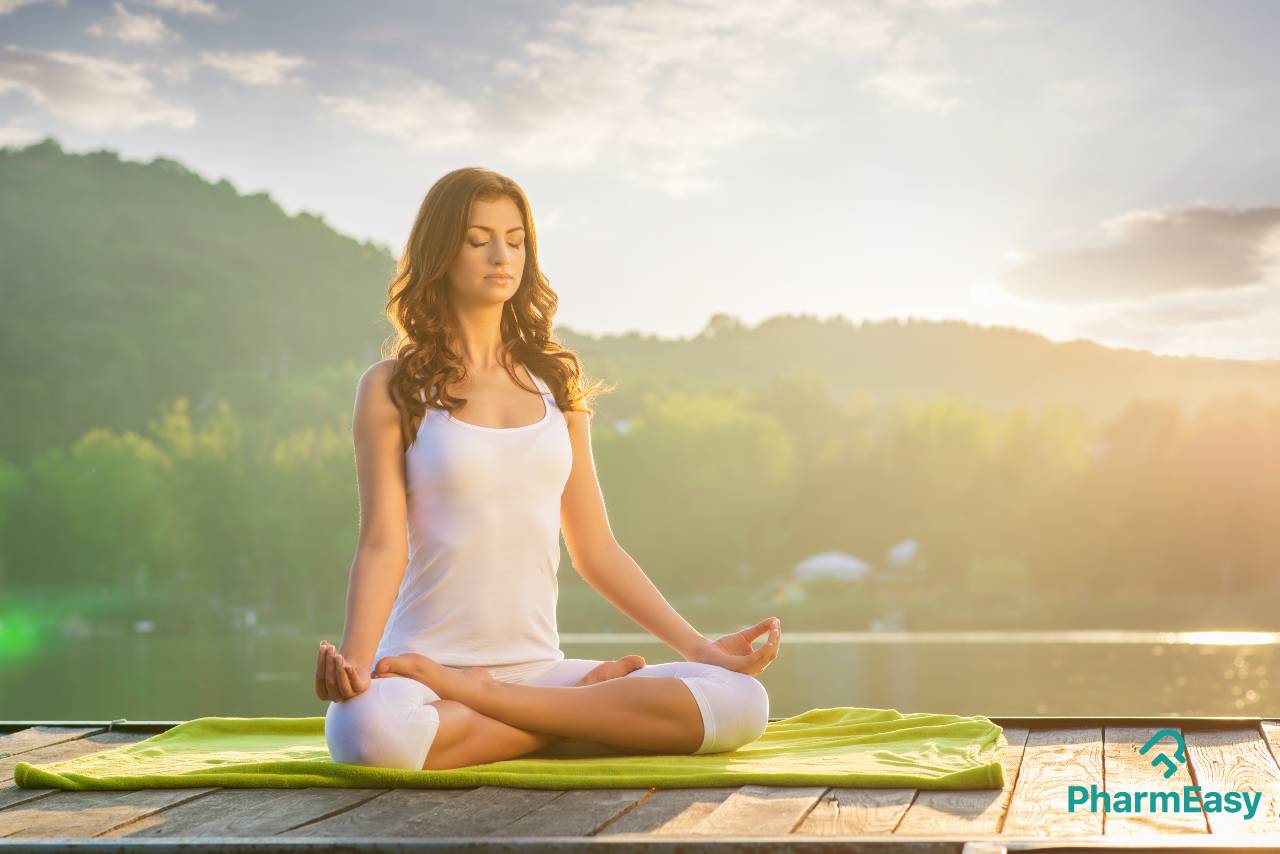
Yoga Is a Healthy Way of Life
Yoga is a healthy way of life for anyone who wants to get in shape and improve their flexibility. It is also a great way to relieve symptoms of menopause, enhance cell-mediated immunity, and fight inflammation. Plus, the benefits aren’t limited to the physical: Yoga can also connect you to a supportive community and help you make lasting relationships.
Improves flexibility
Flexibility is an important part of physical fitness. A lack of it can lead to back pain and sports injuries. In addition, it increases blood flow and improves muscle recovery after a workout. However, training to increase flexibility can be difficult.
Yoga is one way to improve your flexibility. This exercise combines stretching and meditation. It can be a great way to relieve stress and improve your well-being. During the class, you will learn about various stretches and exercises.
You may be surprised to find out that yoga can help with muscle strain and tension. As your muscles relax, you will be able to reduce stress and improve your posture.
There are several types of yoga, including Yin and Vinyasa. You can choose a type that best fits your goals. Use Cenforce and Cenforce 100 mg Tablets to improve erection quality.
You should start slow. Most people start noticing changes within three or four weeks. For a beginner, try to work on strength and support before moving on to advanced poses.
The best way to improve your flexibility is to pay attention to areas of your body that move easily. For example, you may notice that you can reach up to a high shelf without feeling stiff or in pain.
While there is no magic number, a good rule of thumb is to stretch at least once a day. Doing this will help you avoid overuse injury and get you in the habit of doing the right thing.
If you don’t have time for formal yoga practice, there are a few simple stretches you can do at home. These include the eye of the needle pose, Cat-Cow, and standing forward fold.
Fights inflammation
Yoga is a very effective mind-body intervention that can reduce inflammation. It may also increase anti-inflammatory cytokines, improve the immune system, and lower the risk of developing chronic disease.
In general, chronic inflammation is a problem that can lead to a wide variety of health issues. Studies have shown that yoga may be a viable alternative treatment for many illnesses, including rheumatoid arthritis, colorectal cancer chemotherapy, and cardiovascular diseases.
Interestingly, some studies have found that yoga can lower the risk of inflammatory bowel diseases. This is because a reduction in inflammation can help prevent the growth of bacteria that can cause diarrhea.
Several of the studies were conducted using a combination of traditional yoga and meditation. Others used a specific sequence of physical postures or breathing techniques. The program consisted of a 90-minute session of physical poses and meditation.
There are several components of a yoga program, but most involve restorative poses that calm the body and mind. These poses are considered the most important for fighting inflammation because they are effective at promoting relaxation and preventing reactivity.
Aside from decreasing inflammation, yoga can also help slow down the effects of stress. Stress has been linked to numerous illnesses, including inflammation. If you are a caregiver, this is especially true. Using a meditation or yoga routine can reduce the harmful effects of stress on your loved ones.
Although yoga can’t be measured in blood tests, the effects can be felt. One study shows that 12 weeks of yoga practice can reduce cellular aging. Another study showed that a yoga routine can improve one’s quality of life.
However, it is not clear what the most effective yoga regimen will look like. It is unknown whether a certain yoga style or the amount of time spent practicing it will have the best effect on reducing inflammation.
Enhances cell-mediated immunity
Yoga is a mind-body practice that focuses on the body’s internal processes. The practices include postures, breathing, and meditation. This technique is known to boost the immune system and improve overall health.
One of the most important functions of the immune system is to fight off infections. In addition, it helps to heal wounds and regulate homeostasis. However, chronic inflammation can harm the immune system. Compromised immunity makes one more prone to illness and can also aggravate some autoimmune diseases.
Yoga can be used to enhance cell-mediated immunity in the body. It can reduce the levels of pro-inflammatory cytokines in the blood and can help in the healing of infections.
A systematic review of 15 randomized controlled trials (RCTs) on yoga and health found that yoga significantly decreases the risk of autoimmune diseases, including rheumatoid arthritis (RA). Yoga has the potential to alter the psycho-neuro-immune axis and to lower stress response.
In the RCTs, scientists measured the mRNA expression of genes regulating the production of inflammatory cytokines. They found that IL-1beta, TNF-a, and IL-6 were all decreased in the yoga group.
The mRNA expression of CTLA4 (cytotoxic T-lymphocyte-associated protein) was reduced in the yoga group. These cells are involved in the inhibition of T-cell responses. They also regulate the CD28:CD80/86 co-stimulation signal.
Natural killer (NK) cells are an early defense against viral infections. The cells attack stressed cells, and decreases in the number of these cells can lead to the progression of chronic viral infections.
Research is ongoing. More studies are needed to determine the effects of yoga on the immune system.
Researchers suggest that yoga may help RA patients as an adjunct treatment. It can also benefit inflammatory diseases as a complementary therapy.
Relieves symptoms of menopause
When women start menopause, they experience a myriad of symptoms, many of which can be mitigated by yoga. Many of these menopause symptoms are psychological and emotional.
Symptoms can include hot flashes, mood swings, fatigue, and insomnia. These are caused by changes in the reproductive hormones that occur during and after menopause. Menopause causes the depletion of estrogen, a natural sedative. As estrogen levels decrease, women may also become dehydrated and have weakened bones.
Yoga can help ease some of these symptoms, but it cannot replace estrogen. It can, however, provide a holistic approach to self-care that combines the use of HRT and other complementary therapies.
Research suggests that yoga can help reduce the intensity and frequency of symptoms. It can also increase flexibility, bone density, and metabolic rate. The regular practice of yoga can help women maintain mobility and balance during menopause.
In addition to the physical effects of yoga, it can help alleviate anxiety and stress. Many women have reported that they experience an increase in anxiety during menopause. Stress can overburden the adrenal glands, which are responsible for producing more estrogen.
A study of women’s health in the United States and India found that yoga improved mental health. The researchers found that it reduced the mental fog and irritability that can accompany menopause.
While the results of the studies were preliminary, they offer fresh evidence of the benefits of yoga on menopause symptoms. One of the authors notes that the results are similar to other forms of exercise.
Menopause yoga is a combination of breathing exercises and mindful movement that has been designed to relieve menopausal symptoms. This program was developed by Petra Coveney after years of research and personal experiences.
Connects you with a supportive community
There’s something magical about the connection that yoga creates with your fellow yogis. Even a short practice can provide the boost you need to get through the week.
Taking part in a yoga class can also improve your physical health. Yoga is a great way to boost your strength, balance, and flexibility. You’ll even be able to sleep better.
Aside, from helping you find your inner peace, a class or two may also help you build a community. Practicing in a group can make it easier to meet like-minded people, and a supportive teacher can make the experience even more rewarding.
Getting together with other like-minded people can also be a great way to learn more about the yoga you practice. This can be achieved by attending local classes, taking part in community events, or even hosting your free sessions.
One thing that is often missing from many of our daily rituals is the social aspect of life. The best way to build connections is to go out of your way to get to know people. That means being a friendly person, listening to others, and letting your guard down.
Having a social circle is no easy feat, especially in the modern world. Many of the younger generations are leaving home to attend college or work. Luckily, there’s no shortage of organizations in the public and private sectors working to help the next generation to reach their full potential.
For example, the Circle Yoga Connects project is a not-for-profit 501c3 organization that has built a network of communities all over the country. It also promotes a healthy lifestyle by providing education and training to teachers and students.







1 thought on “Yoga Is a Healthy Way of Life”
Comments are closed.